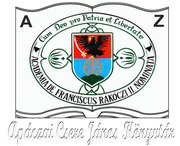Please use this identifier to cite or link to this item:
https://dspace.kmf.uz.ua/jspui/handle/123456789/4639| Title: | Cellulose-based Catalyst Design for Efficient Chlorate Reduction |
| Authors: | Sikora Emőke Katona Kitti Krisztina Muránszky Gábor Bánhidi Olivér Kristály Ferenc T. Szabó József Windisch Márk Fiser Béla Bela Fiser Фішер Бейло Vanyorek László |
| Keywords: | Cellulose;Catalyst;Chlorate reduction;Catalytic hydrogenation |
| Issue Date: | 2021 |
| Publisher: | Elsevier |
| Type: | dc.type.collaborative |
| Citation: | In Arabian Journal of Chemistry. 2021. Volume 14., Issue 7. 9 p. |
| Series/Report no.: | ;Volume 14., Issue 7. |
| Abstract: | Abstract. The reduction of undesirable chlorate (ClO 3 ) is important from both an environmental and an industrial point of view. In our work, cellulose-based catalysts have been designed for chlorate reduction by using palladium, platinum, and iron oxide. The produced catalysts were characterized by SEM, TEM, XRD, FTIR, and ICP. Even though low precious metal content (<0.6 wt %) was used during the catalyst preparation, high catalytic activity was achieved, and the conversion was as high as 92.5%. Furthermore, a continuous chlorate hydrogenation and monitoring system has also been developed within which the reduction has been carried out successfully and after about 160 min the ClO 3 content has been reduced to zero. |
| URI: | https://dspace.kmf.uz.ua/jspui/handle/123456789/4639 |
| ISSN: | 1878-5352 (Print) 1878-5379 (Online) |
| metadata.dc.rights.uri: | http://creativecommons.org/licenses/by-nc-nd/3.0/us/ |
| Appears in Collections: | Fiser Béla |
Files in This Item:
| File | Description | Size | Format | |
|---|---|---|---|---|
| Emoke_et_al_Cellulose_based_catalyst_design_2021.pdf | In Arabian Journal of Chemistry. 2021. Volume 14., Issue 7. 9 p. | 2.08 MB | Adobe PDF | View/Open |
This item is licensed under a Creative Commons License





